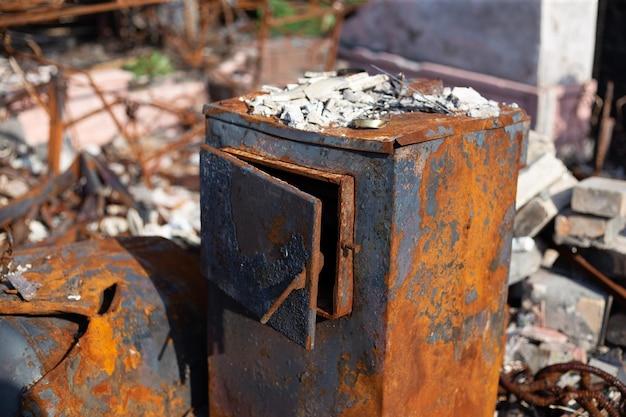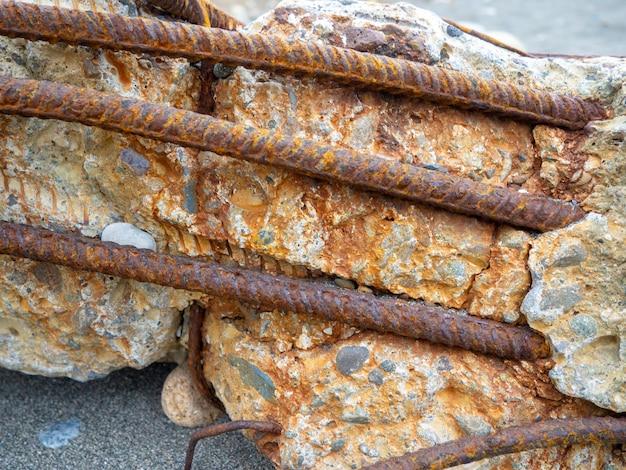Iron is one of the most widely used metals in the world, known for its strength and durability. But can it be destroyed? This question has intrigued scientists and curious minds for centuries. In this blog post, we’ll delve into the fascinating world of iron and explore its vulnerabilities when faced with various elements, such as fire, rust, and corrosion. We’ll also uncover the truth behind the saying “nothing destroys iron but its own corrosion” and discover ways to prevent the rusting of this versatile metal. So join us on this exploration as we unravel the mysteries surrounding the destruction of iron.
Can Iron Be Destroyed
Iron, the age-old element that has played a pivotal role in human civilization, is renowned for its strength and durability. But can this metal superhero be destroyed? Well, hold on to your welding masks and let’s delve into the fascinating world of iron destruction.
The Unstoppable Force of Rust
Ah, rust – the nemesis of iron. When iron comes into contact with oxygen and water, a chemical reaction occurs, resulting in the formation of iron oxide, more commonly known as rust. This reddish-brown flaky substance not only tarnishes the aesthetics of iron but also weakens its structural integrity.
Wielding Fire and Temperature
While rust may be iron’s arch-enemy, extreme heat is its frenemy. Iron has an incredibly high melting point, approximately 2,800 degrees Fahrenheit (1,538 degrees Celsius). So, unless you have a handy-dandy furnace or a mini sun lying around, completely obliterating iron through heat alone is no easy feat. However, subjecting iron to high temperatures can alter its physical properties, making it softer and more malleable.
The Power of Hammer and Anvil
Before you start swinging Thor’s hammer at your iron belongings, let’s explore the mighty force of impact. Iron is notoriously strong and difficult to destroy through mechanical means. It can withstand tremendous pressure and impacts without crumbling like a digestive biscuit. In fact, iron has been widely used for centuries in construction, weaponry, and various other applications due to its outstanding strength.
The Advocate for Iron Immortality
While iron may be a formidable opponent, it is not indestructible. Over prolonged periods, exposure to harsh elements, corrosion, mechanical stress, and a plethora of other factors can gradually weaken iron structures. It may not be an overnight destruction extravaganza, but given enough time, even the mightiest of iron fortresses can crumble.
The Verdict: Iron Can Be Tamed, But Not Easily Defeated
In conclusion, although iron can withstand the test of time, it is not invincible. Rust, extreme heat, and the powers of impact can all chip away at its strength. So, while you may not be able to obliterate iron with a flick of your finger, know that time and other destructive forces will eventually have their way. Remember, even Iron Man has his weak spots.
FAQ: Can Iron Be Destroyed
Introduction
Iron, an essential metal in our daily lives, has been used for centuries due to its strength and durability. However, many people wonder whether iron can be destroyed or if it is truly indestructible. In this FAQ section, we’ll address some common questions about iron’s resilience and explore its vulnerabilities.
What can withstand fire
Fire is a formidable force, capable of reducing various materials to ashes. While most substances succumb to the destructive power of flames, there are a few that can withstand their scorching heat. Among these resilient materials are certain types of metals, including iron.
Does fire melt metal
Fire can certainly melt some metals, particularly those with low melting points like aluminum and lead. However, iron is different. It has an incredibly high melting point of approximately 2800 degrees Fahrenheit (1538 degrees Celsius), making it highly resistant to being melted by fire.
What metal cannot be destroyed
While no metal is truly immune to all forms of destruction, iron comes close to being indestructible. Its strength and durability allow it to withstand extreme conditions, making it exceptionally difficult to destroy.
Is it true that none can destroy iron
Well, while iron is incredibly resilient, there is one foe that it cannot escape: rust. Yes, even the mighty iron can be brought down by the slow and persistent process of corrosion.
How does rust destroy iron
Rust, scientifically known as iron oxide, forms on iron surfaces when exposed to moisture and oxygen for extended periods. This corrosive process weakens the iron, gradually breaking it down and ultimately leading to its destruction.
What is meant by rust
Rust is the reddish-brown substance that coats iron when it corrodes. It is composed of hydrated iron(III) oxide and forms a brittle layer on the metal’s surface, causing it to become weakened and eventually disintegrate.
Which iron does not rust
Some types of iron are less prone to rusting. Stainless steel, for example, contains a high percentage of chromium, which forms a protective layer on its surface. This layer acts as a shield against rust, making stainless steel a popular choice for various applications.
What causes rust
Rust is primarily caused by the presence of moisture and oxygen. When iron comes into contact with these elements, a chemical reaction occurs, resulting in the formation of iron oxide. Heat and salt can also accelerate the rusting process.
What is the meaning of “nothing destroys iron but its own corrosion”
This statement emphasizes the power of rust in gradually breaking down iron. Simply put, while iron is incredibly strong, it is ultimately its own corrosion, in the form of rust, that poses the greatest threat to its durability.
Can rust be converted back to iron
Unfortunately, once iron has transformed into rust, it cannot be directly converted back to its original form. However, it is possible to remove rust from iron surfaces using various methods such as mechanical abrasion, chemical rust removers, or electrolysis.
How can the rusting of iron be prevented
To prevent iron from rusting, it is important to create barriers that shield it from moisture and oxygen. This can be achieved through techniques like applying protective paint, oiling, galvanizing, or using coatings that contain corrosion inhibitors.
What is the most toxic heavy metal
Although heavy metals can be harmful in high concentrations, mercury is widely considered the most toxic. Exposure to mercury can cause severe health issues, affecting the nervous system, kidneys, and other vital organs.
Does rust destroy metal
Yes, rust can indeed destroy metal. As rust eats away at the surface of the metal, it weakens its structural integrity, making it vulnerable to further damage and eventual disintegration.
Why does iron get rusted
Iron gets rusted due to a chemical reaction between the iron, oxygen, and moisture. When these elements combine, they form a new compound known as iron oxide, or rust, which gradually erodes the iron.
What does rust look like
Rust typically appears as a reddish-brown coating on the surface of iron or other metals. Its appearance can vary depending on factors such as the level of corrosion and the presence of other impurities.
Is Iron flammable or explosive
No, iron is neither flammable nor explosive. It is a non-flammable and non-explosive metal, making it a reliable and safe material for various applications.
What is impossible to burn
Although fire can consume most materials, there are substances that are virtually impossible to burn. Examples include non-flammable materials such as asbestos, certain ceramics, and of course, metals like iron.
Is heavy metal poisoning real
Yes, heavy metal poisoning is a real and serious health concern. Exposure to high levels of heavy metals such as lead, mercury, arsenic, and cadmium can lead to a range of health problems, including neurological and organ damage.
Does pure iron rust
Yes, pure iron can rust. In fact, pure iron is even more susceptible to corrosion than some iron alloys. This is why protective coatings or alloys like stainless steel are often used to prevent rusting and increase the durability of iron-based products.
What is the only thing that can destroy iron
While many factors can contribute to the deterioration of iron, rust, the corrosion process it undergoes, is truly its nemesis. The slow and persistent nature of rust can eventually lead to iron’s destruction if not properly protected.
What is the most indestructible metal
When it comes to metal durability, tungsten takes the crown. With the highest melting point of all known metals and incredible strength, it is as close to indestructible as we can get in the realm of metals.
What kind of iron does not rust
Stainless steel is a specific kind of iron that does not rust easily. Its resistance to corrosion is due to the presence of chromium, which forms a protective layer on its surface, shielding it against rust and other forms of degradation.
What can destroy steel
Steel, a robust alloy of iron, is known for its strength and resilience. However, extreme heat, sometimes in combination with other factors like moisture or corrosive substances, can weaken steel and potentially cause its destruction.
Can anything destroy iron
While iron is highly durable and can withstand immense stress, nothing is truly invincible. In the long run, rust remains iron’s greatest threat, gradually eroding its strength and leading to its demise.

